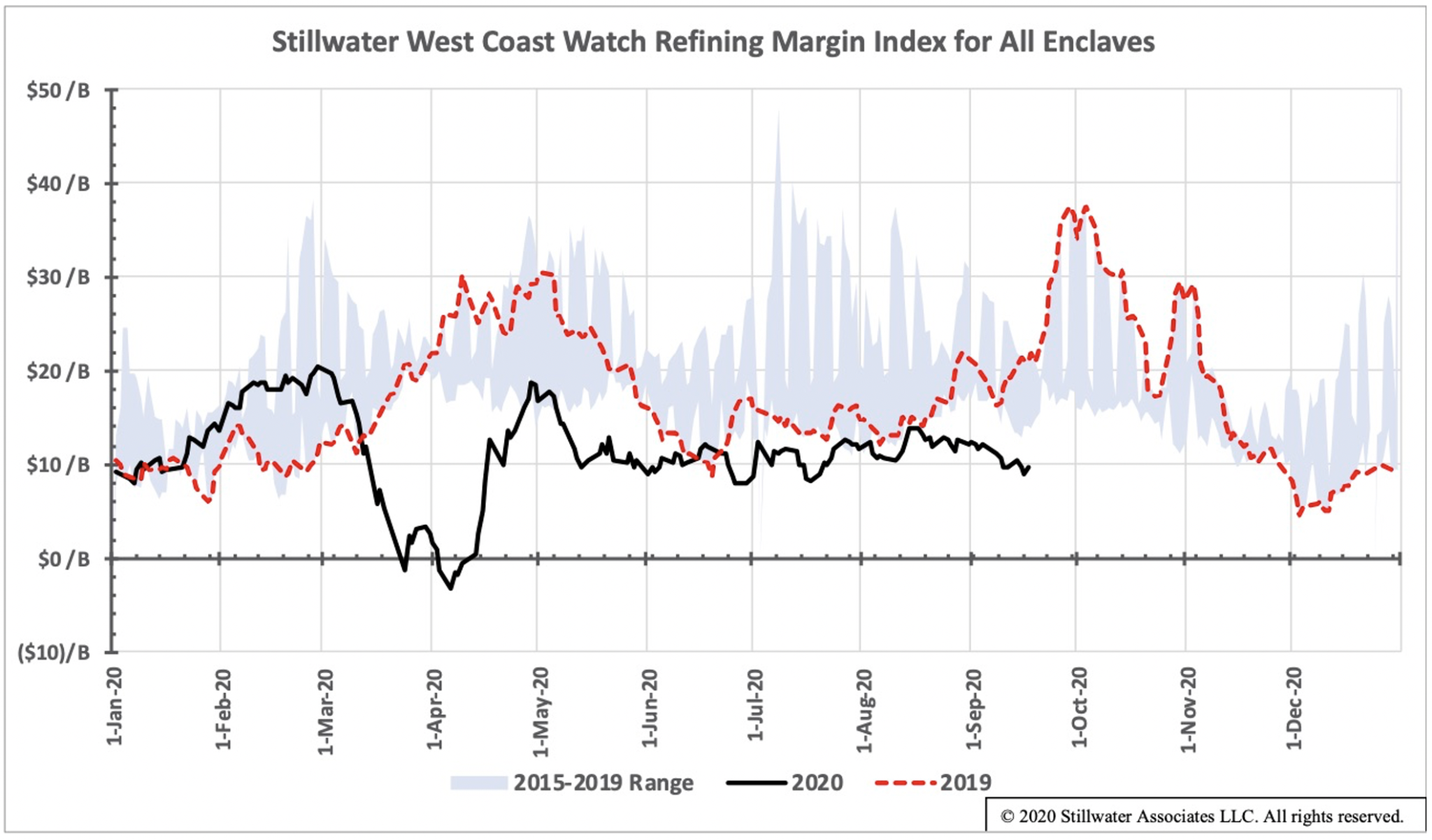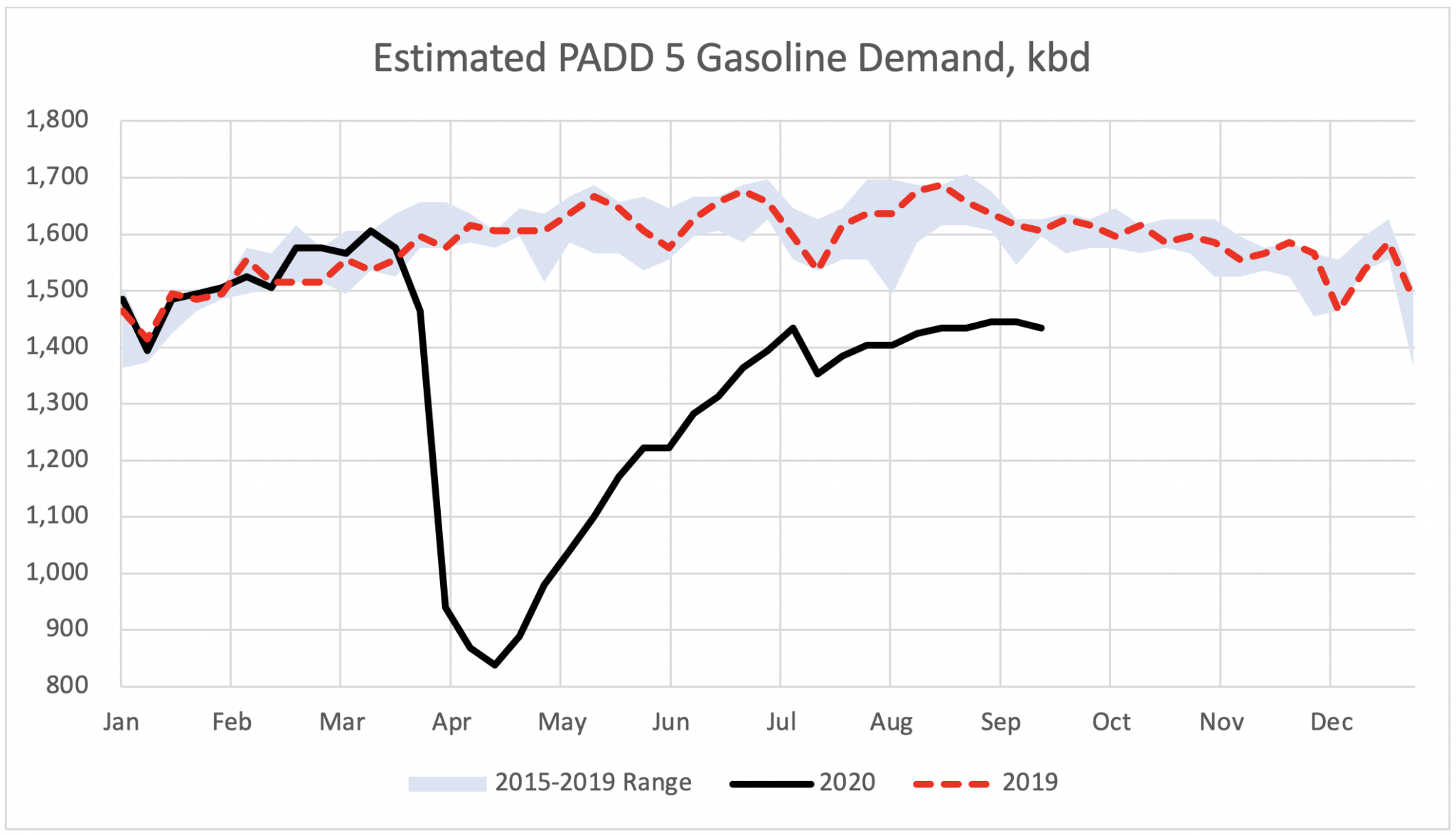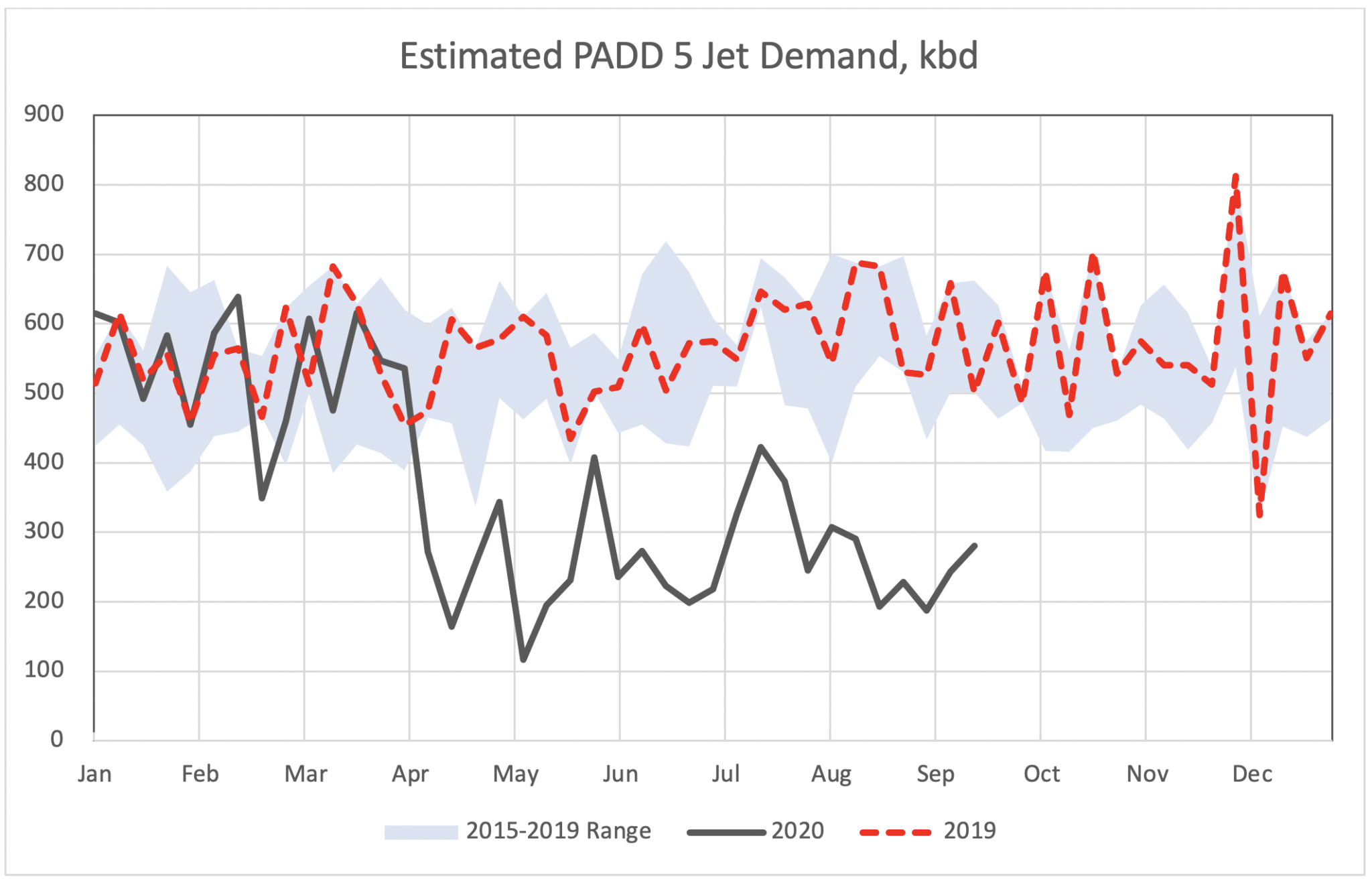West Coast Watch: The Pandemic and Wildfires Pummel Refining Margins
Link to article: https://stillwaterassociates.com/west-coast-watch-the-pandemic-and-wildfires-pummel-refining-margins/
September 22, 2020
By Megan Boutwell
The West Coast transportation fuels market is often referred to as an island, and refiners in California and Washington face unique market pressures even in the best of times. West Coast refiners are isolated geographically, must produce gasoline and diesel to unique specifications, and are subject to greenhouse gas (GHG) reduction regulations including the federal Renewable Fuel Standard (RFS), California’s Low Carbon Fuel Standard (LCFS) and Cap and Trade (C&T) programs, and Oregon’s Clean Fuels Program (CFP). Based on these factors and with an eye toward helping stakeholders navigate this difficult market, Stillwater has developed a proprietary index to assess West Coast margins at the refinery gate. The West Coast Watch Refining Margin Index is designed around the market enclaves (Southern California, Northern California, and the Pacific Northwest), the typical crude run in West Coast refineries, the cost of compliance with GHG-reduction regulations, and the local refined product prices.
West Coast Refining Index Trending Down in September
The prolonged impact of the pandemic has resulted in ugly refining margins for West Coast refiners. This has been compounded by the severe wildfire season that has seen over five million acres burned across California, Oregon, and Washington. Since we introduced the West Coast Watch Refining Index last month, indices for all three enclaves, Northern California, Southern California, and the Pacific Northwest, have trended slightly down. The August average refining margin index for Southern California refiners was $11.89/bbl, while the average for September-to-date is $10.85/bbl. The August average refining margin index for Northern California refiners was slightly better than those in Southern California at $12.51/bbl. For September-to-date, the average Northern California refining margin index has fallen to $11.12/bbl. The Pacific Northwest has seen the steepest decline, losing $1.66/bbl from the $11.57/bbl average in August to $9.91/bbl average so far in September.
The chart below provides a broader picture with some historical context, showing the five-year average index range for the entire West Coast (all three enclaves) along with the trends for 2019 and 2020. Since the big dip into negative territory at the beginning of the shut-down in late March, there had been some improvement as the 2020 indices edged closer to the bottom of the five-year range during the first half of August. The average West Coast margin index for August was $12.00/bbl, about a 22% decrease from the August 2019 average of 15.50/bbl. The margin index for September has slipped, however, with the average for September-to-date at 10.71/bbl. This is a 46% decrease from the same period last year of $19.65/bbl.
Demand is still well below average, driving margin collapse
The steep decline in demand caused by the pandemic is driving refining margin collapse. The demand trend is illustrated by PADD 5 gasoline demand data provided by the U.S. Energy Information Administration (EIA) below. Demand bottomed out in mid-April due to the pandemic, hitting about 52% of the same week in 2019. Since then, gasoline demand has improved from 88% of 2019 volumes at the end of August. The week including Labor Day weekend saw a slight decrease from the end of August at 1,434 thousand barrels per day (kbd), or 88% of the same week in 2019.
Labor Day weekend resulted in a slight improvement to the dismal jet fuel demand picture. The demand trend is illustrated by the EIA PADD 5 jet demand data, displayed below. Jet demand averaged about 225 kbd in August, or about 38% of demand at the same time in 2019. For the first two weeks of September, jet demand improved to about 262 kbd, or 45% of demand at the same time in 2019 at 580 kbd.
As stated last month, we may be seeing the top of improved demand during the pandemic. Stillwater’s view is that gasoline demand will recover in 2021, but at about 90% of EIA’s 2020 Annual Energy Outlook forecast for the year. Jet fuel will struggle to recover, only returning to about 65% of forecasted demand. There have not been any announced changes or closures since Marathon and Phillips 66 broadcast their plans for their California refineries last month. But the prevailing question continues to be: Will the current level of demand be sufficient to keep existing refineries running at a high enough utilization to improve margins? We’ll be following market developments closely in Stillwater’s West Coast Watch.
Tags: Demand, Refining Margins, West Coast, West Coast Watch



